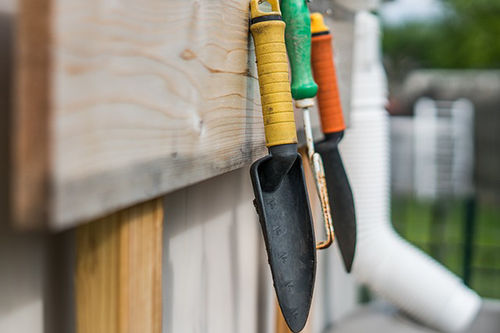10 garden tips
Scott Mozingo Product Manager, Burpee
1. Spend some time with your Burpee catalog! Nothing helps combat cabin fever like time spent daydreaming about the garden. Gardening catalogs provide all kinds of information and inspiration and with a nice hot drink, you can spend hours flipping pages and getting ideas. You’ll find old favorites as well as the newest and greatest ever year. All good gardeners should challenge themselves to try something new each year. Maybe it’s a new variety of a favorite kind of vegetable or a new veggie entirely, maybe a new flowering annual or perennial, or something you’ve never grown before. Seed catalogs can help you find something different every year.
2. Survey the yard and form a plan. If you’re in the south, this one is easy but in the north, this is an activity for when the snow clears. It’s a good idea to start indoors looking out the windows you look out all the time. Is there a spot in your yard you see from your windows that needs attention? Do you wish you had more color to look at while washing the dishes? Make note of that and head outdoors. Have a look at your beds and borders, your vegetable garden and container locations. Can you add more containers? Is there room for some color in that bed? That new flower in the catalog would look perfect there! Make notes and you’re on your way.
3. Order your plants. Now that you have a plan, it’s time to order those seeds and plants to get ready. Seeds will show up quickly, but don’t worry, plants will not arrive until it’s time to go out. It’s important to do this early as new varieties might sell out quickly and you don’t want to miss them. Also, make note of plants that attract pollinators like bees and butterflies. It’s important to nurture them in your garden so they visit often and pollenate your vegetables.
4. Head out to your local garden center. Winter is a great time to visit your local garden center for advice. Ask them to help you plan or design areas before they get too busy. It’s also a great time to buy new pots, soil amendments and potting soil. Starting your shopping early for hardgoods can help spread the costs out over a couple months.

5. Clean garden beds, containers and tools. This is an essential early-spring activity. Any debris that accumulated over the winter should be removed or composted. Clear up any old foliage that might still be around, cut off ornamental grasses and remove any branches that fell. Start removing old soil from containers, or bring containers out and play with the placement in the yard. Have a good look at your shovels, trowels, pruners and do any cleaning, sharpening or oiling needed. This way when the weather breaks, nothing will slow you down!
6. Start seeds for spring indoors. It’s time to plant! Seeds have arrived and it’s time to get your warm season flowers and veggies started indoors. Check the sowing instructions on each seed packet and start sowing.
7. Soil test and amend beds. Early spring is the perfect time to do soil testing for your vegetable garden. Many companies sell test a home kits, but you can also find companies online to send samples to. This is the best way to know you’re providing your plants everything they need. Once the results are back, make the recommended amendments for nutrition. You can also add organic matter like compost to improve the soil quality.
8. Clean birdhouses, baths, plan areas for bees. Every garden needs beneficial insects and birds are helpful in the garden as well. Make sure to clean out bird houses, feeders, and baths so they’re in good shape to welcome everyone to your yard.
9. Force branches for fun. Gardening shouldn’t be all work this time of year. If you have flowering trees in your yard, now is a great time to force branches of them to enjoy inside. Grab a clean, sharp pruner and cut a few thin branches about 18-24 inches long. Bring them indoors and, while underwater, make a few thin slits in the base of the branches. Keep the indoors at 60-70 degrees and change the water every other day or so. It might take 4-6 weeks, but it’s worth it.
10. Start a compost area. Your garden will thank you for it! Composting is easy and does not need a lot of space. Make sure it’s convenient so you bring your kitchen scraps out, and close to water. Start with a layer of dry material like leaves or straw. Alternate kitchen scraps, lawn clippings and dry material. After a few turns, you’ll be making your own garden gold!